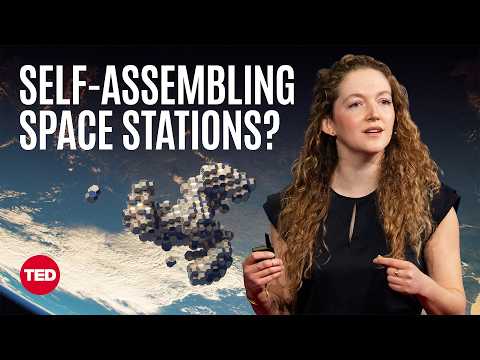Space exploration and infrastructure development can drive innovation, enable new technologies, and ultimately benefit life on Earth while expanding humanity's presence in space
Questions to inspire discussion
Space Infrastructure
🚀 Q: How can we build large structures in space despite rocket size limitations?
A: Use self-assembling structures like Tesserae, which employ electropermanent magnets to join modular tiles in zero gravity, enabling reconfigurable space stations larger than the biggest rockets.
🏗️ Q: What are the potential benefits of offworlding heavy industry to space?
A: Space-based manufacturing can produce sustainable energy, food, and water for a trillion-dollar space economy, allowing Earth to recover as a garden planet for future generations.
Space-Based Manufacturing
🧬 Q: How can microgravity in low-Earth orbit advance biotech manufacturing?
A: Enable unique manufacturing of protein crystals, tissues, and novel drugs impossible on Earth, with high-throughput production of exceptional quality organoids for Alzheimer's and cancer drug testing.
☀️ Q: How can space-based solar power solve Earth's energy challenges?
A: Capture raw sunlight in space and beam it anywhere on Earth, even at night, solving the storage problem for solar power and delivering abundant green energy to the planet's surface.
Space Training and Exploration
🌠 Q: How can individuals train for microgravity environments?
A: Use parabolic flights like the Vomit Comet to train the new space generation, bringing dozens of people into microgravity annually for long-term space mission preparation.
🌍 Q: What is the broader significance of space exploration for humanity?
A: It's about building an aspirational future for humanity on Earth, in orbit, and beyond, with access to space now cheap and available enough to update our conception of the possible.
Key Insights
Space Infrastructure Revolution
🚀 Self-assembling space structures using Tesserae technology with electropermanent magnets enable rapid, autonomous construction of orbital habitats without astronaut intervention.
🌠 The cost of space access has plummeted from $50,000/kg in the NASA Shuttle era to under $200/kg with SpaceX's Starship, making orbital deployment as accessible as global shipping.
Scientific and Economic Potential
🧪 Orbital real estate dedicated to solving Earth's problems could lead to unprecedented scientific and medical breakthroughs only achievable in zero gravity environments.
💰 The space economy is projected to reach $1 trillion within the next decade, driven by innovations in orbital construction and increased accessibility.
Urgent Need for Space Development
🏗️ With the International Space Station's decommissioning set for 2030-2031, there's a critical need for new, scalable space infrastructure to continue and expand orbital research capabilities.
🌍 Space exploration is evolving from an escape plan to a means of building an aspirational future for humanity both on Earth and in orbit, emphasizing the interconnectedness of terrestrial and space-based progress.
#Starcities
X Mentions: @HabitatsDigital @ariel_ekblaw @aurelia_labs
Clips
-
00:00 🚀 Space exploration drives breakthrough innovations that benefit life on Earth, from modern computing and LASIK eye surgery to life-saving biotech and energy solutions.
-
01:38 🚀 The cost to access space has dropped dramatically, but current in-space construction methods are slow, difficult, and dangerous, and a new solution is needed to scale up space infrastructure.
-
03:15 🤖 Ariel Ekblaw's team invented a system to grow space structures in orbit using autonomous robotic self-assembly, allowing for reconfigurable space stations that are bigger than the largest rockets.
-
04:40 🚀 Modular space structures can be efficiently launched, assembled, and docked in orbit to form larger space stations through dynamic robotic self-assembly.
-
05:30 🚀 In space, unique microgravity environment enables manufacturing of life-changing biotech products, such as novel drugs and artificial tissues, that can't be made on Earth.
-
06:46 ✨ Space technology can be used to beam abundant green energy from orbiting solar panels to Earth, solving the storage problem for solar power and allowing the planet to recover as a "garden planet".
-
07:56 🚀 Space architecture is being developed to welcome more people to orbit, enabled by rockets like Starship that can scale up infrastructure for the public good.
- 08:48 🚀 Investing in space infrastructure can profoundly benefit life on Earth and expand humanity's horizons while protecting the planet.
-------------------------------------
Duration: 0:10:42
Publication Date: 2025-06-17T08:14:47Z
WatchUrl:https://www.youtube.com/watch?v=IHrGK3Mu5K4
-------------------------------------

